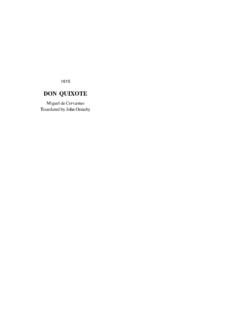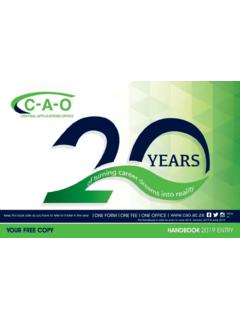Transcription of PROBE 2 SAMPLES - Comprehenz
1 PROBE 2. reading comprehension assessment MANUAL. A multiple-use reading PROBE designed to gain insight into a reader's comprehension skills and reading behaviours with the purpose of determining teaching strategies. CREATED, DESIGNED & WRITTEN BY. Chris Parkin & Catherine Parkin TRiUNE. INITIATIVES. 2011. 1. PROBE 2 Reading Comprehension Assessment - Manual Chris Parkin & Catherine Parkin Triune Initiatives 2011. Triune Initiatives Ltd Wellington PIRATING DENIES US. A RETURN FOR OUR LABOUR AND. New Zealand CAPITAL FOR FUTURE RESOURCES.
2 Email: All rights reserved ISBN PROBE 2 Reading Comprehension Assessment - Kit 978-09582694-5-2. PROBE 2 Reading Comprehension Assessment - Manual 978-09582694-3-8. PROBE 2 Reading Comprehension Assessment - Student Texts 978-09582694-4-5. With the exception of Part 4 Copymasters, that may be photocopied directly from this book's masters (excludes copies of copies), no part of this publication may be reproduced, stored in a retrieval system, or transmitted in any form by any means, electronic, mechanical, photocopying, recording or otherwise, without the prior written permission of the publisher.
3 Printed in New Zealand by Valley (Print). 2. CONTENTS. Introduction page 4. About the texts page 5. Components, copyright, purchasing page 6. MANUAL PART ONE - GUIDE. Basic outline - and quick guide page 8. From start to finish - determining the start & end point page 9. Considerations 1 - for this assessment page 10. Considerations 2 - for this assessment page 11. Student behaviours - beyond right & wrong answers page 12. Recording comprehension - with example page 13. Bracketing - a time saver page 14. Assessment example page 15.
4 Four options for using PROBE 2 page 16. Option 1 - informal reading inventory procedure page 17. Option 1 - oral reading observation page 18. Option 1 - oral reading analysis page 19. Option 2 - silent reading comprehension procedure page 20. Option 3 - listening comprehension procedure page 21. Option 4 - written comprehension procedure page 22. PROBE 2 taxonomy - outline page 23. PROBE 2 taxonomy - the literal question page 24. PROBE 2 taxonomy - the reorganisation question page 25. PROBE 2 taxonomy - the inference question page 26.
5 PROBE 2 taxonomy - the vocabulary question page 27. PROBE 2 taxonomy - the evaluation question page 28. PROBE 2 taxonomy - the reaction question page 29. What to do next ` page 30. MANUAL PART TWO - DETERMINER. Purpose & design page 32. Procedure & interpretation page 33. Examples page 34 - 36. MANUAL PART THREE - ANSWERS. Guide to use page 38. Page features page 39. Answer pages - 40 sets page 40 - 79. MANUAL PART FOUR - COPYMASTERS. Recording sheet use page 82. Organisation of texts page 83. Recording sheets - copymasters page 84 - 123.
6 Determiner quick guide page 124. Determiner recording sheet - copymaster page 125. Written comprehension recording sheet - copymaster page 126. Student reading record - copymaster page 127. Ten teacher behaviours - that negatively affect results page 128. 3. INTRODUCTION. Students should be encouraged to: read carefully, to use the evidence, and draw legitimate conclusions. Studying a writer's work in this way makes demands on your intelligence and your concentration, whereas guessing the point he [sic] is making, without regard to logic or to the clues he has dropped, is as easy as it is unrewarding.
7 '. Young & Gardner, Intelligent Reading, Longmans Green & Co., London, 1964. There is no point in reading if you don't understand what you are reading about. Knowing all the individual words in the vocabulary of a language will not help understand the meanings of those words in their various combinations and sequences if there is no teaching or modelling of understanding. While reading often and widely is a major contributor to success, for many young people the ability to comprehend at a high level doesn't just happen naturally - it needs to be taught.
8 And taught not once, not twice, but regularly throughout their schooling. This involves teaching the skills of close and intelligent reading. These skills must not be overlooked. They must not be dismissed as unimportant, or just too hard to achieve. To ensure students get the guidance and practise they need, teachers of reading must continue to develop their understanding of the reading process and the skills successful readers require. Teachers must use close and intelligent observations of their students to help determine existing skills and the achievements their students make.
9 PROBE 2 Reading Comprehension Assessment ( PROBE 2) is an assessment resource that can help make these observations. While PROBE 2 assists teachers to determine a student's reading level, the focus of attention should not simply be on a numerical outcome. It is more important to utilise the strengths of this assessment: 1. To get a greater understanding as to how students engage with the texts and to observe the reading behaviours they exhibit. 2. To get an insight into whether the mental images they are forming match the intent of the author.
10 3. To see if they can reorganise scattered information, pick up complex and simple inferences, work out unknown vocabulary in context and form an opinion directly related to the text. In effect, PROBE 2 is a controlled in-depth interview that will, if the information gathered is well considered, greatly help teachers to determine specific teaching strategies for their students. AN ALL-NEW PROBE . PROBE Reading Assessment was first published in December 1999 (revised in 2002 & 2009). PROBE 2 Reading Comprehension Assessment is an all-new version of the original assessment.

